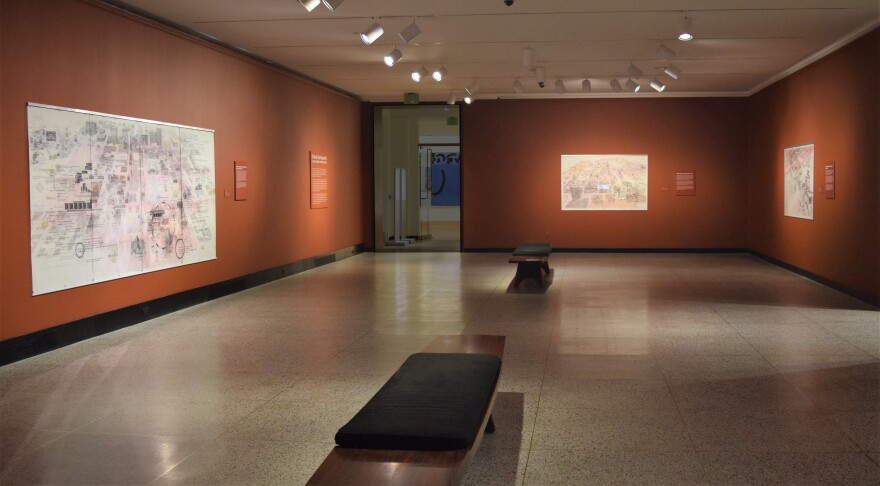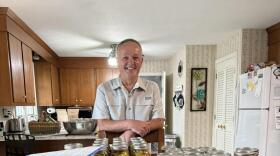The artist Larissa Fassler is the daughter of an architect, an upbringing which in part explains her own interest in the way residents are shaped by the places they live.
“I started to become very curious about how these different built environments, how the design of our cities, especially our public spaces, affect the way we move through, use, and inhabit space,” Fassler says in a recording for the audio tour of "Critical Cartography," her new show at the Currier Museum in Manchester.
The exhibition consists of large scale pencil, ink and crayon maps. They're maps in the traditional sense in that you can see the city’s grid and buildings, but they’re also riddled with notes, observations, and additional research.
“What they are showing is not just a physical map,” explains Samantha Cataldo, the Currier Musuem’s curator for contemporary art. “They’re not just showing buildings and open spaces and inaccessible spaces. They are not showing landform. But they are showing information, and data, and her observations.”
Fassler, who was born in Canada and now resides in Berlin, Germany, has done similar studies of other cities, including Istanbul, Calgary and New York.

In 2019, she spent seven weeks as an artist-in-residence at the Currier, during which she kept detailed journals and sketches.
“On my first walks out into the city to find a grocery store, to walk to the bank, to stroll downtown, I was struck how very few other people were out walking,” says Fassler in the audio guide. “It was summer, the weather was beautiful, and yet on my walks I felt quite alone, rarely seeing others out on foot.”
Fassler works these observations onto the maps, sometimes in the form of statistics, like a chart showing the minimum wage, or the number of opioid fatalities.
But she also includes on-the-ground details that would never make it into Google Maps: the price of cigarettes at the corner convenience store, locations of "No Loitering" signs. She also includes snippets of overheard conversations. The grit of the city, its challenges as she saw them, are worked into the canvas.
Fassler’s time in Manchester happened to coincide with one of President Trump’s rallies in the city last year. In the exhibition’s main work, as well as a supplemental map, she sketches some of the signs people were carrying near the arena.
In that way, the work feels like a snapshot in time, the way all maps ultimately are.
“Maps are thought of like a dictionary or an encyclopedia, like they are reference material, which means they are always true,” says Cataldo. “But in this case, the artist is really making the point: Well, in the hands of an artist, especially, a map is very subjective.”
In short, the person making the map shapes it, the way a city can shape its inhabitants.
Fassler’s "Critical Cartography" will be on view through the spring. In response to the pandemic, the Currier is asking visitors to reserve timed tickets in advance to limit crowding.








